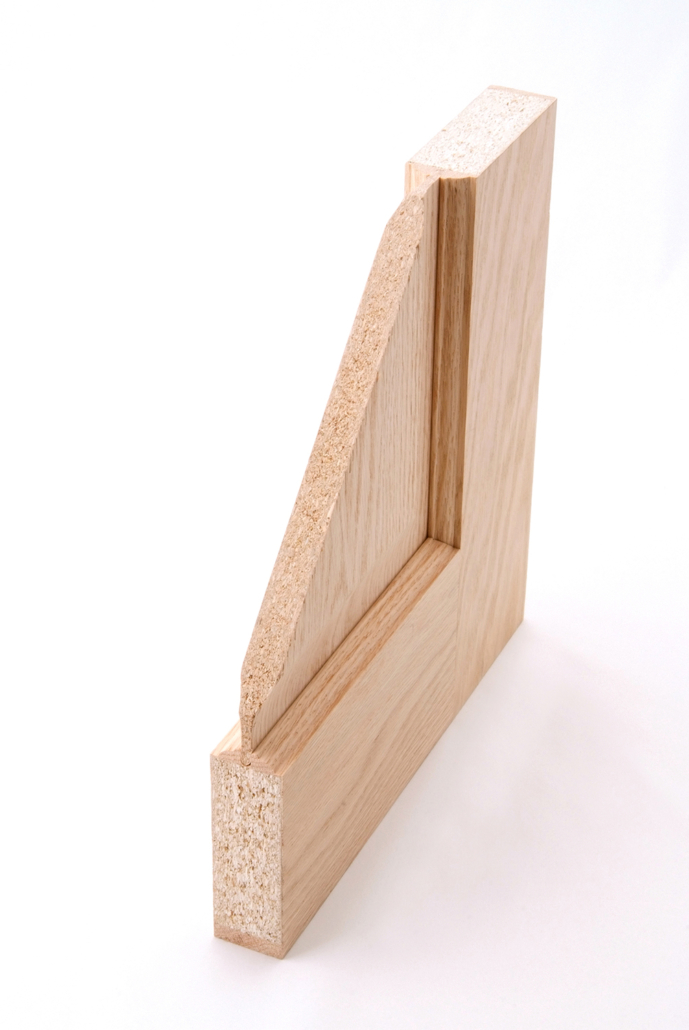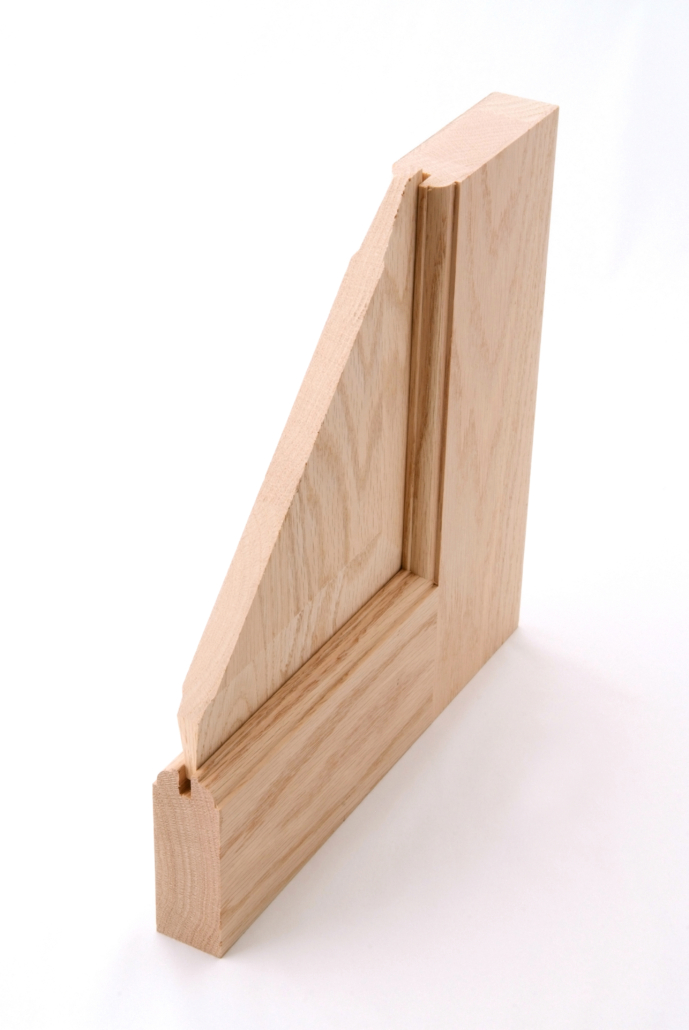What’s the Best Interior Door? See What’s Inside and Which One You Should Buy!
If you’re designing the home of your dreams, every detail matters – from the crown moulding to the interior doors.
While it might be tempting to go with the lowest-cost option, before you make a purchase, it’s important to know how every style impacts the look and feel of your home. Even what’s inside of those interior doors makes a huge difference – from the sounds you hear while you’re trying to get some shut-eye to the lifespan of the door itself.
When it comes to doors, there are several options out there…all with their own pros and cons. Hollow core doors, solid core doors, veneer doors, solid wood doors – how do you even know where to start? Well, sit back and relax, because this is our specialty! Let’s take a look at the most popular interior door materials and answer all of the questions you didn’t even know you had!
Types of Interior Doors Explained
When it comes to picking the right door, it’s important to know how each door is made and what’s inside of it (both of these factors affect the functionality and soundproofing of your door).
Ever walk through a newer home and wonder why it doesn’t feel quite as cozy or luxurious as some others you’ve seen? It might be something as simple as the quality of the interior doors. Wooden doors can be customized, offer some weight (which you can easily feel when opening the door) and deliver significant soundproofing when compared to hollow core or MDF door options. Let’s explore the differences and see how they stack up against one another.
Hollow Core Doors: An Entry-Level Moulded Door Option
Moulded hollow core doors are made from wood by-products and pressed (or moulded – hence the name) into forms that create the desired door style. The inside of the door is composed of cardboard honeycombs or styrofoam to maintain the structure of the door itself.
If you cut off enough from the bottom of a hollow core interior door, eventually you will reveal the hollow space between the pieces of wood (which makes it difficult to cut this door down to accommodate new flooring, etc.).

Pros of Moulded Hollow Core Doors
Hollow core interior doors are lightweight which makes them great for a DIY installation. Many weigh between 20-25 lbs. They are the most budget-friendly of any door option, as well, which can make them an attractive choice for someone on a tight budget.
Cons of Moulded Hollow Core Doors
Moulded hollow core doors don’t provide good sound insulation. Because of this, it’s suggested that homeowners avoid using hollow core styles for bedrooms or any space that needs privacy. These can make nice closet doors, however.
If you’re looking to add hardwood, re-carpet a space or complete any type of interior design project that requires you to shorten the door, hollow core doors may need to be replaced. When you cut into the bottom of a hollow core door, you’ll need to fill in the empty space at the bottom with wood composite for it to maintain its structure. This can be difficult if you don’t have the necessary tools.
Solid Core Doors: A More Sturdy Moulded Door
Solid core doors can be made of moulded particle board, medium-density fiberboard (MDF) or solid wood, but when it comes to moulded options, the exterior is made in the same fashion as its hollow core door counterpart.
Moulded solid core doors are composed of wood by-products but have a solid layer of material inside. Sometimes it’s the same material as the face but other times it can be filled with a different, cheaper material like compressed wood fibers. The door’s moulded exteriors are then glued to the core material to form a strong bond.
Pros of Moulded Solid Core Doors
Moulded solid core doors are much more stable than hollow core doors. They’re far less likely to take on damage, and by comparison, offer some added soundproofing and insulation.
Their added durability when compared to hollow core doors and the insulation they provide make them more popular for interior spaces like offices and bathrooms.
Cons of Moulded Solid Core Doors
Moulded solid core doors are a bit heavier than hollow core doors, so you might need a pair of extra hands if you’re planning a DIY installation. Their weight can be between 30 and 50 pounds, depending on the door style and size. They also cost a bit more than hollow core doors. Like hollow core moulded doors, these styles don’t offer the durability and longevity of solid wood doors.
See the difference for yourself as we cut right through each interior door style.
Wood Veneer Doors: Durability Above and Beyond Moulded Doors
A veneer door is a type of solid core door. It’s composed of a thin strip of natural wood that is glued to the core material. It can be made from high-quality wood species, such as oak or hickory, or a less expensive option like poplar. With this type of door, the wood grain can be stained or painted even though the core is made of a cheaper type of wood, MDF or particleboard.

Pros of Wood Veneer Doors
Wood veneer is a cost-effective option if you want the look of natural wood but don’t want to pay for a solid wood door. Depending on the species chosen, the exterior of the door can have a beautiful grain pattern that accepts stain and finish as well as any other hardwood product. Like solid core doors, wood veneer options also provide great temperature and sound insulation.
Cons of Wood Veneer Doors
As might be expected, wood veneer doors aren’t as durable as solid wood doors. Since there is just a thin layer of actual hardwood on the exterior of the door, dents and scratches can be difficult to repair. (Deep gouges can go through the veneer and into the core of the door, which is often a different, cheaper species.)
Solid Wood Doors: When You Want the Best of the Best!
Solid wood doors are made from your desired hardwood or softwood species. Depending on the look and feel you’re trying to achieve, solid wood doors can come as a single, smooth slab or with stiles, rails and panels assembled together.

Pros of Solid Wood Doors
Solid wood doors are extremely environmentally friendly because the production process doesn’t require any of the chemicals or adhesives that are used during the manufacturing of the other door styles. High-quality hardwood makes for a very durable door that provides excellent insulation, soundproofing, beauty and options for customization. Even better, the harder the wood species, the more durable your door will be!
Solid wood door designs are virtually limitless. If damaged, you can even have them refinished and restored.
Cons of Solid Wood Doors
Depending on the type of wood species, solid wood doors can be susceptible to warping, just like all of the other door options. That said, some wood species have smaller pores, which makes them more resistant to soaking in water (ex. cherry and oak).
What Type of Door Should I Buy? Wooden Doors vs. Hollow Core Doors
If you’re basing your decision on cost alone, moulded hollow core doors sit at the lowest price point. But, with that low price comes lower quality. When you think of builder-grade homes, this is the door you’d get. (Solid core moulded doors are only a small step up from here).
With a wood veneer door, by comparison, you’ll get more soundproofing and weight, two things that make a huge difference. These doors can also be stained or painted, giving you more versatility.
But, if you’re going to consider veneer, why not go the whole way to solid wood doors? In fact, if you’re planning to paint the door, solid poplar isn’t that much more expensive than its wood veneer counterpart!
Wanting to match higher-end cherry, oak or maple mouldings? Solid hardwood doors are really the only way to go! The look, feel and sound of solid wood isn’t even on the same playing field as moulded hollow core doors.
In the end, the type of interior door that’s best for you depends on what you’re looking for!
Want to see more? Check out our recent Fix It Friday episode with Fox 8 out of Cleveland!
Quality Hardwoods for Quality Interior Doors
What are interior doors made of? Well, now you know! (And, now you’re all set to pick out your very own dream doors!)
Ready to start shopping? We offer a range of interior door styles that you can custom order. From veneer doors to paneled hardwood doors with glass inserts – if you dream it, we can build it. Even better, we have experts on hand and ready to help, whether you’re giving us a call or stopping at our showroom! Browse our online shop or contact our sales team and we’ll get you set up with the perfect interior door for you.



